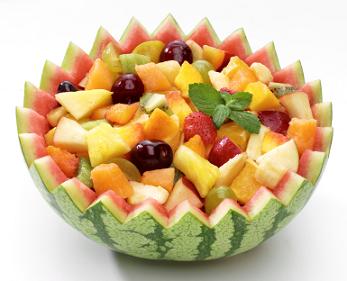The world around us is made up of many particles. Sometimes, these particles come together and make mixtures and compounds. Mixtures are two or more substances that combine physically; an example of this is a fruit salad. On the other hand, a compound is two or more substances that combine chemically but not physically. A perfect example for a compound is water. |
 Figure 1: Fruit salad |
 Figure 2: Jar of sand water |

Figure 3: Glass of salt water
|
Compounds are created when two or more elements chemically combine to form a different substance. The substances in the compound do not retain the same original properties that they started out with and can be very hard to break apart. An example of this is table salt. The to substances that create table salt are green chlorine gas and sodium. Both are deadly to life by themselves, but combined make table salt with is important to the survival of most life.
Figure 4: Table salt

Hope you like the blog, and make sure to leave a comment in the comment section down below.
No comments:
Post a Comment